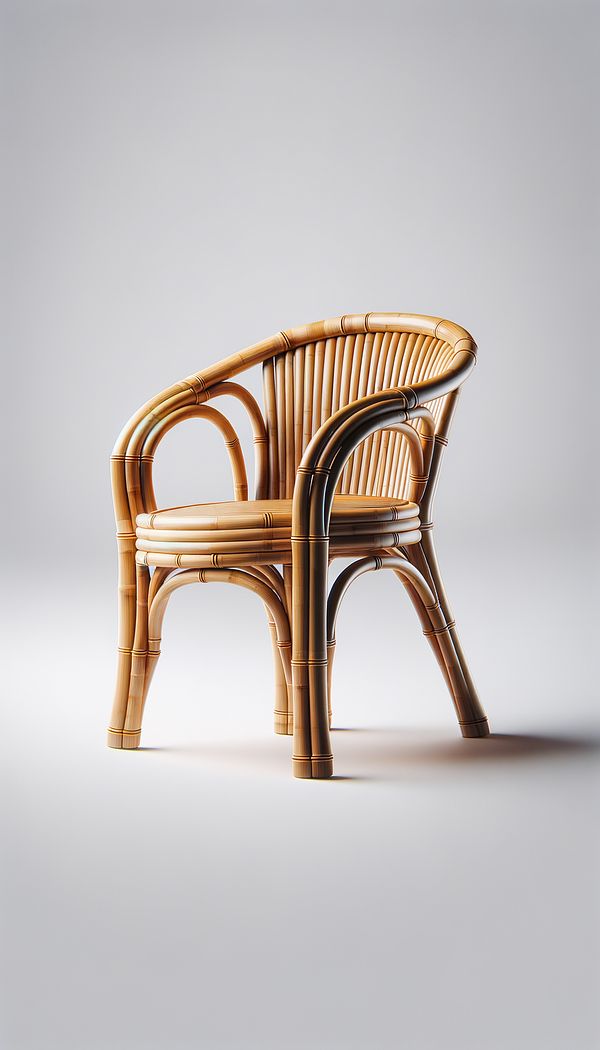What is Bamboo Turning?
Bamboo Turning is a technique used to shape bamboo into various forms and structures for interior design and furniture making.
Description
Bamboo Turning is a specialized procedure where bamboo, a highly renewable and flexible material, is shaped, curved, and formed into various structural and aesthetic elements. This process utilizes traditional woodworking techniques adapted specifically for bamboo, allowing craftsmen to explore the material's unique properties and strengths. Through the use of lathes, and sometimes by hand, artisans create smooth, contoured shapes that highlight bamboo's natural beauty and texture.
This method is not only praised for its environmental benefits, brinigng sustainability to the forefront of design, but also for the distinct look and feel it gives to furniture and other interior elements. The finish, texture, and strength of turned bamboo pieces make them highly desirable in both residential and commercial spaces. As a result, Bamboo Turning plays a significant role in sustainability and eco friendly design, adding value and unique appeal to various design styles, from modern to tropical aesthetics.
The demand for hand-crafted and sustainably sourced materials has increased the popularity of Bamboo Turning within the interior design community. This technique illustrates a beautiful synergy between traditional craftsmanship and modern design needs, fulfilling the rising desire for materials that are not only visually appealing but also kind to our planet.
Usage
Bamboo Turning can be seen in a variety of interior design elements, such as custom-made furniture pieces like chairs, tables, and shelving units, as well as decorative objects and architectural details. It is also frequently utilized in creating outdoor furniture and structures due to bamboo's natural resistance to weathering.
FAQs
-
How does Bamboo Turning contribute to sustainability?
Bamboo Turning contributes to sustainability by utilizing bamboo, a highly renewable resource that grows quickly and requires minimal resources. This reduces the reliance on traditional wood and contributes to the reduction of deforestation and carbon emissions.
-
Can Bamboo Turning be applied to any interior design style?
Absolutely. The versatility of Bamboo Turning allows it to be integrated into a wide range of interior design styles, from contemporary and minimalist to tropical and bohemian. Its natural aesthetic can add warmth and texture to any space.
-
How is Bamboo Turning performed?
Bamboo Turning is performed using lathes that rotate the bamboo at high speeds while craftsmen use sharp tools to shape and form it. Skilled artisans can also perform this technique by hand for more intricate designs.
Practical Application
When incorporating Bamboo Turning into your design projects, consider the natural characteristics of bamboo, such as its grain, texture, and color variations, to enhance the aesthetic appeal of your space. Pair turned bamboo furniture and decor with complementary materials like natural stones, textiles, and metals to create a harmonious and sustainable interior. Maintenance is also key; regularly cleaning and treating bamboo can extend its life and preserve its beauty.
-
Design Styles478 articles
-
Furniture Types599 articles
-
Decorative Techniques322 articles
-
Fabrication & Craftsmanship133 articles
-
Sustainability & Eco-Friendly Design69 articles
-
Accent PieceAn accent piece is an item within an interior space that stands out due to its color, shape, texture, or unique design.
-
Egg & DartEgg & Dart is an ornamental design featuring alternating egg-shaped and dart or arrow-like elements.
-
Claw & BallClaw & Ball is a decorative motif featuring a claw, paw, or talon grasping a ball, typically used in furniture legs.
-
Sawbuck TableA sawbuck table is a type of table characterized by its X-shaped supports.
-
Italian FinishingItalian Finishing refers to a high-quality, meticulous approach to surface finishing in interiors, known for its attention to detail and use of luxurious materials.
